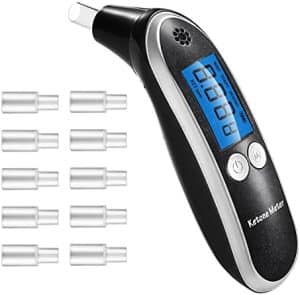You’ve been eating in a calorie deficit, hitting your workouts, and the scale was dropping—until it wasn’t. Suddenly, fat loss stalls, motivation dips, and frustration kicks in. You’ve hit a weight loss plateau. This article will discuss how to break weight loss plateau and adjust to a metabolic adaptation from diet and exercise.
This is where understanding metabolic adaptation changes the game. Instead of fighting your body, you can work with it to restart fat loss while protecting muscle and motivation.
What Is Metabolic Adaptation?
Metabolic adaptation—also called adaptive thermogenesis—is your body’s natural response to long-term calorie restriction. As you lose weight, your body burns fewer calories, and fat loss slows down.
This happens through:
- Decreased resting metabolic rate (RMR)
- Lower NEAT (non-exercise activity)
- Hormonal shifts (leptin, ghrelin, thyroid hormones)
- Increased energy efficiency during movement
It’s a survival mechanism. Your body senses fewer incoming calories and adjusts to maintain balance—even if that means storing fat more stubbornly.
Why Does Fat Loss Stall Over Time?
When you first enter a deficit, weight drops quickly due to water loss and glycogen depletion. But over time:
- You weigh less, so you burn fewer calories
- Hunger hormones rise, making it harder to stick to your plan
- Your metabolism slows to match lower calorie intake
- Your workouts may become less intense, reducing total output
All of this creates a new maintenance level, and fat loss stalls. This is not failure—it’s biology.
How to Break Through a Weight Loss Plateau
You don’t need to crash diet or add hours of cardio. Instead, use science-backed, sustainable strategies that reset your metabolism and maintain muscle.
1. Recalculate Your Calorie Needs
As your body changes, so does your TDEE (Total Daily Energy Expenditure). If you’ve lost 15+ pounds, your original deficit may now be maintenance.
Use a calculator or simple math:
- New TDEE = Current weight x 14–16 (based on activity level)
- Create a new deficit of 300–500 calories below that
Avoid aggressive cuts. Slow and steady wins.
2. Increase NEAT
NEAT drops during fat loss, sometimes unconsciously. Walking less, fidgeting less, or sitting more can mean hundreds of lost calories per day.
Reintroduce purposeful daily movement:
- 8,000–12,000 steps/day
- Hourly walk breaks
- More standing and active chores
NEAT is low-stress but high-impact.
3. Use Strategic Diet Breaks
A 1–2 week diet break at maintenance calories can:
- Reset leptin levels
- Rebalance thyroid function
- Restore training intensity
- Improve mood and adherence
Use this every 8–12 weeks to combat adaptation and refresh mentally.
4. Focus on Resistance Training
Muscle is metabolically active tissue. The more you have, the more you burn—even at rest.
Keep strength training 3–4x per week with progressive overload. Prioritize:
- Compound lifts (squats, deadlifts, presses)
- Moderate volume (8–12 reps, 3–4 sets)
- Near failure with good form
Don’t overdo cardio. Too much can increase adaptation and reduce recovery.
5. Cycle Your Calories
If you’re stuck in a long-term deficit, try calorie cycling:
- Higher calories on training days (for recovery and muscle retention)
- Lower on rest days
- Average weekly deficit still in place
This keeps the metabolism guessing while supporting hard sessions.
What About Hormones?
Fat loss affects hormones like:
- Leptin – drops with fat loss, reducing satiety
- Ghrelin – increases, boosting hunger
- Thyroid – slows down metabolism
- Cortisol – rises with stress and fatigue
That’s why stress management, sleep, and nutrition are vital. Use adaptogenic herbs, prioritize 7–9 hours of sleep, and include healthy fats for hormonal balance.
Key Signs You’ve Hit a Plateau
- No fat loss for 2+ weeks despite adherence
- Reduced gym performance and motivation
- Low energy and mood swings
- Constant hunger or cravings
- Digestive slowdown or poor sleep
Use data—scale, tape measure, photos, and how your clothes fit. Plateaus can also be visual, not just numerical.
The Math Behind Restarting Fat Loss
Let’s say your starting weight was 220 lbs with a TDEE of 2,800. You lost 20 lbs and now weigh 200 lbs:
- New TDEE = 200 x 14 = 2,800
- After adaptation, actual TDEE may be closer to 2,400
- If you’re still eating 2,300, you’ve hit maintenance
- Adjust to 2,000–2,100 and increase NEAT to resume loss
Fat loss is a moving target. You must adjust as your body does.
Key Takeaways
- Metabolic adaptation is a normal, expected response to long-term fat loss
- It slows fat loss by reducing metabolic rate, movement, and hormone function
- Break plateaus by adjusting calories, increasing NEAT, and using diet breaks
- Focus on resistance training to preserve muscle and metabolism
- Treat your body with patience, strategy, and long-term consistency
Read Next…
- Why You Have Problems Sleeping Once You Reach 50
- The Dangers of Ketosis While Fasting
- How to Use Functional Exercise to Improve and Determine Longevity
- How to Use a Breath Ketone Meter on a Fast or Keto Diet
- How to Survive a Prolonged Fast: A Practical Guide for Fat Loss and Health
Subscribe now and get a 14-day free trial workout app for iPhone users.





